Abstract
In small-scale pilot trials, filarial infection can usually be reduced to low levels by oral administration of diethylcarbamazine to all the persons concerned; but in mass campaigns it is often difficult to persuade large numbers of people to swallow the tablets. In order to overcome this difficulty the authors propose that the compound be incorporated into cooking salt, as has been done with chloroquine to control malaria. There are many reasons why this method of medication should be more effective against filariasis than it has often been against malaria.
Laboratory trials showed that cooking the compound in food did not make it toxic for rats or diminish its antifilarial activity. A pilot trial was carried out at Recife, Brazil, in which 1000 adults received salt containing 0.4% diethylcarbamazine (corresponding to a daily intake of 100 mg/day) for 40 days, and then salt containing 0.1% compound for a year. This medication was simple to administer; it was quite acceptable to the subjects; it caused no untoward effects; and it removed almost all the microfilariae from the blood. Administration of medicated salt (0.3%) for 18 days to another group of 1300 adults was well tolerated and produced a considerable reduction of the microfilarial load; but this short period was insufficient to remove all the microfilariae.
The authors recommend that this method of administering diethylcarbamazine to large numbers of people should be investigated further to see if it could be used for mass campaigns to control filariasis.
Full text
PDF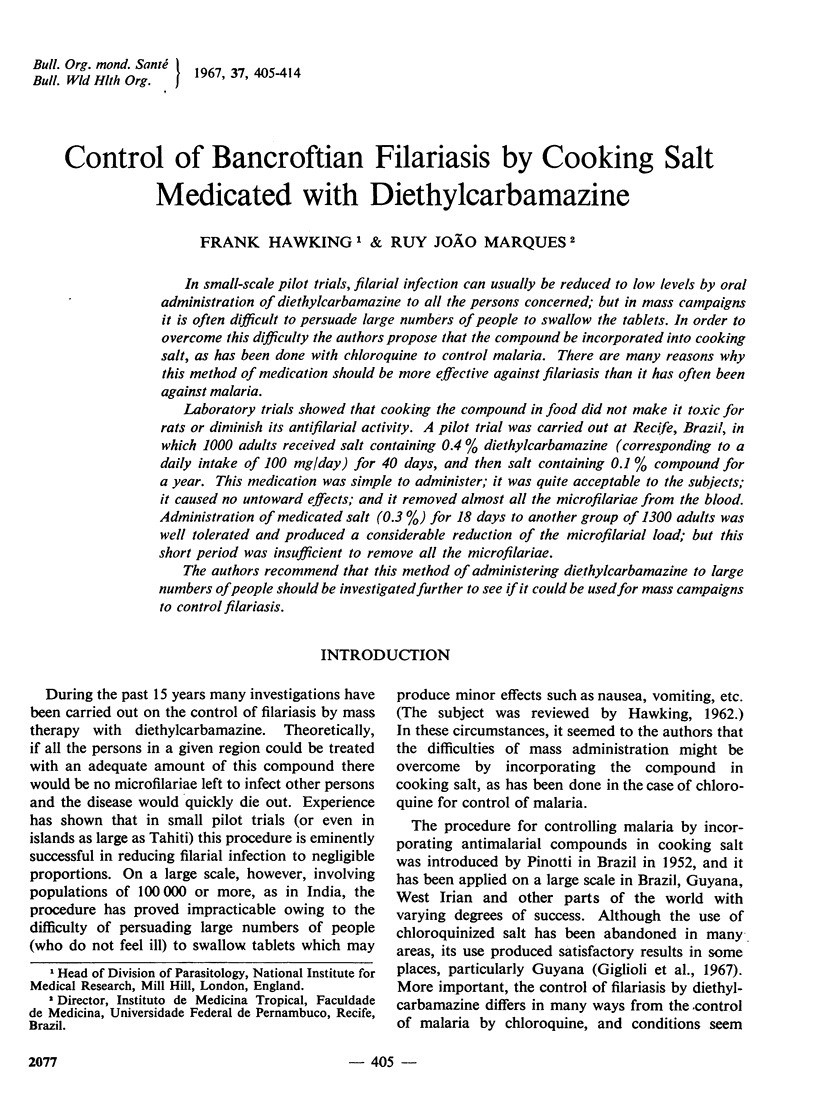
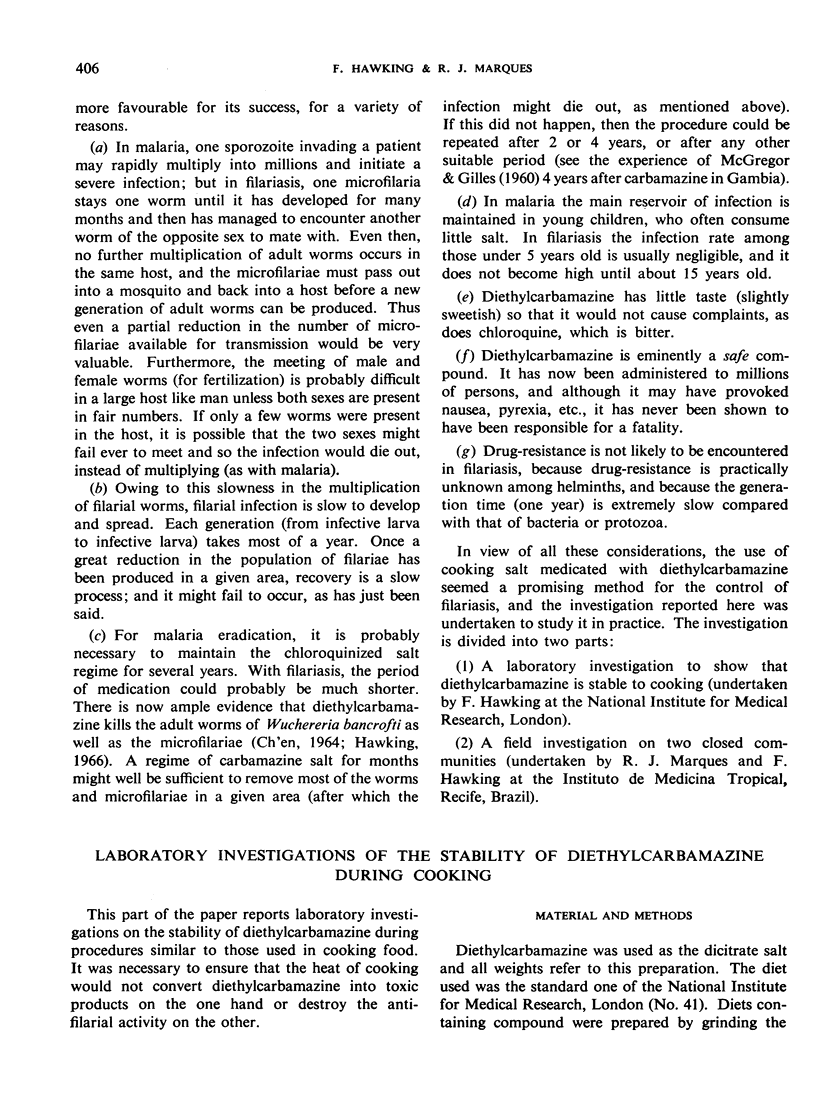
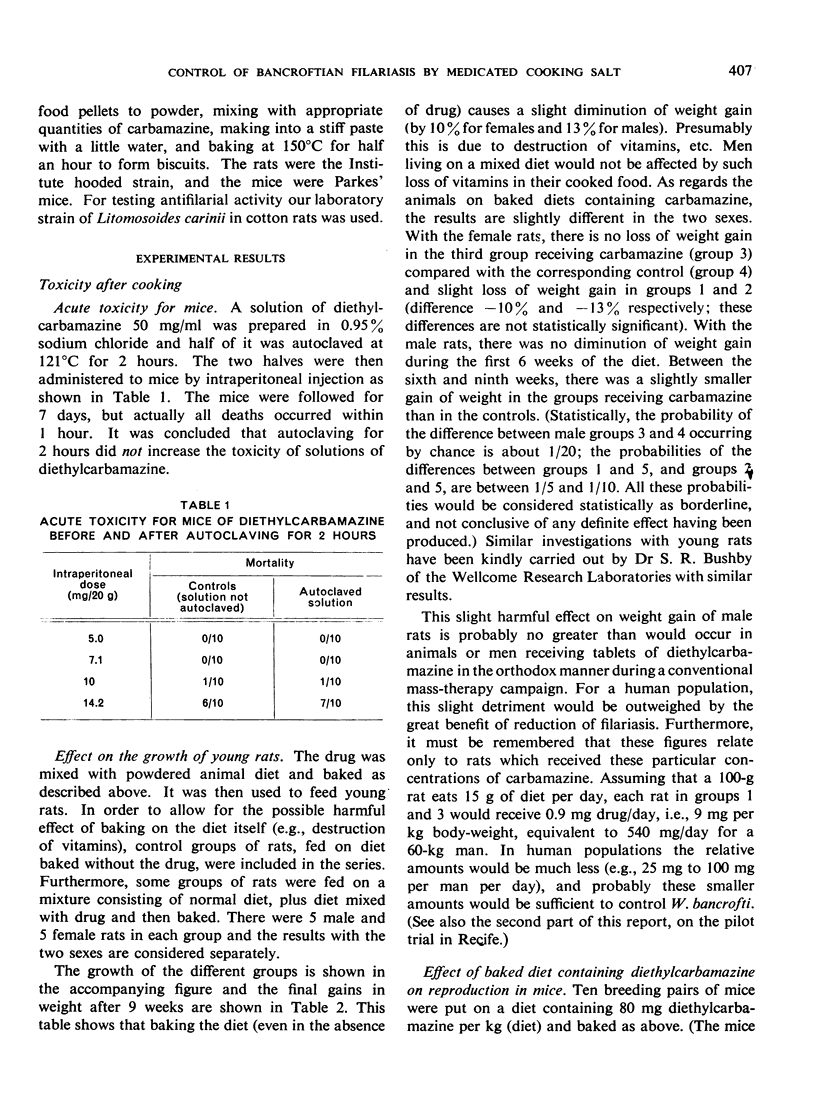
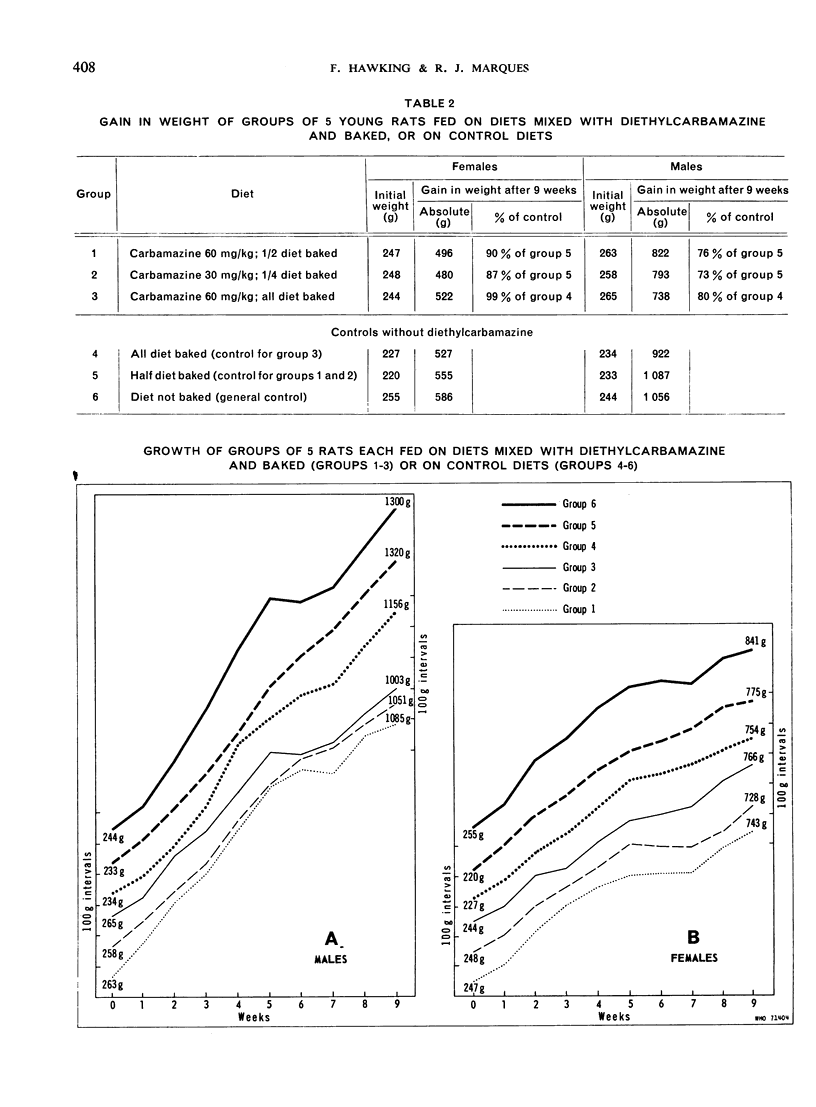
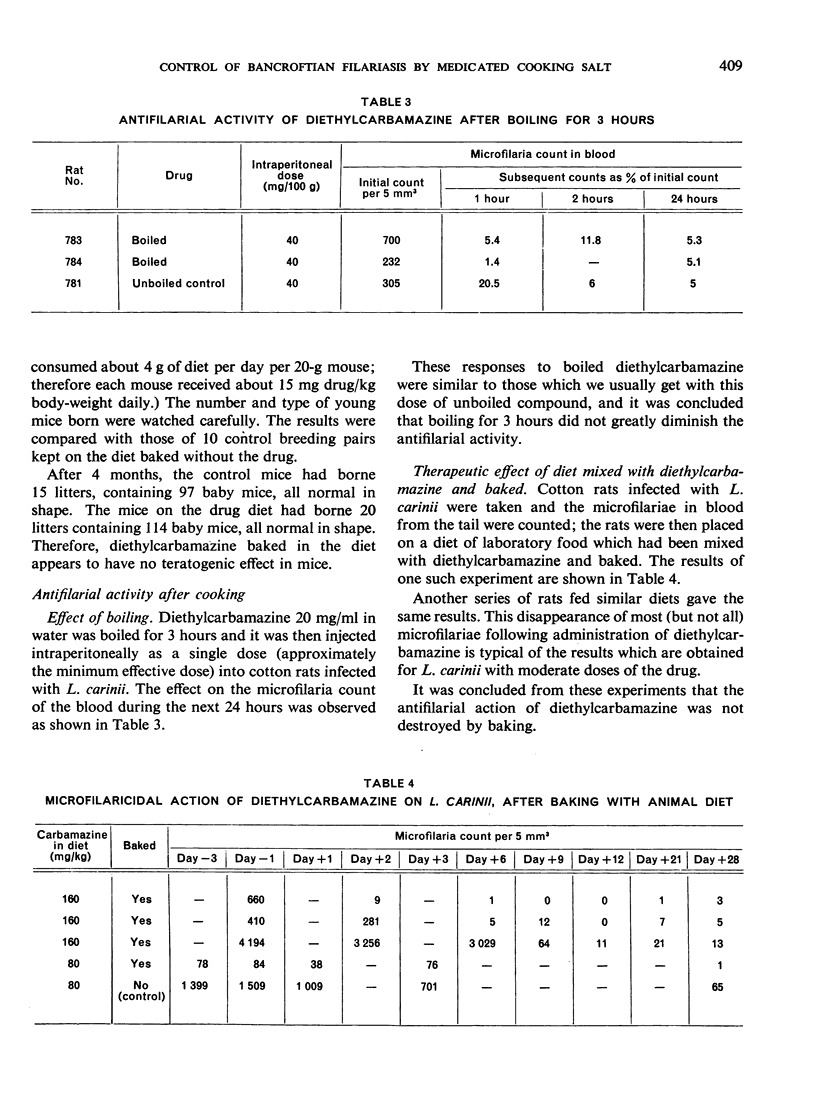

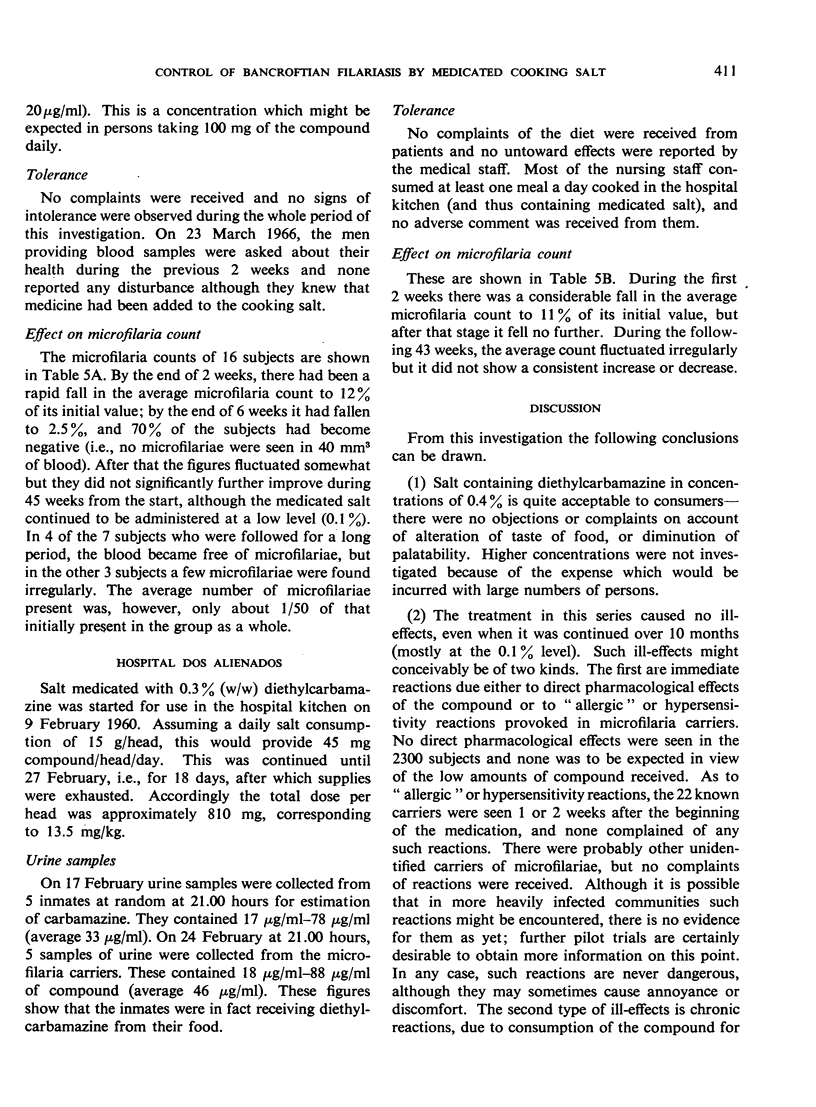
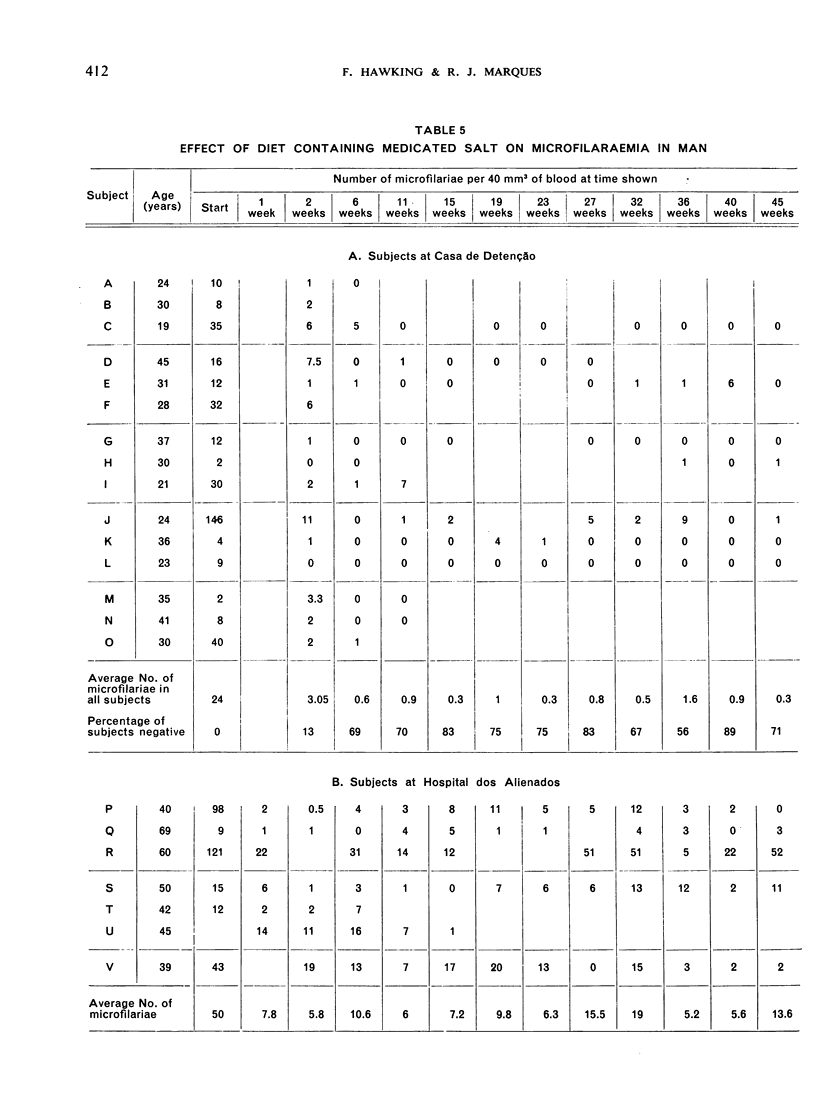
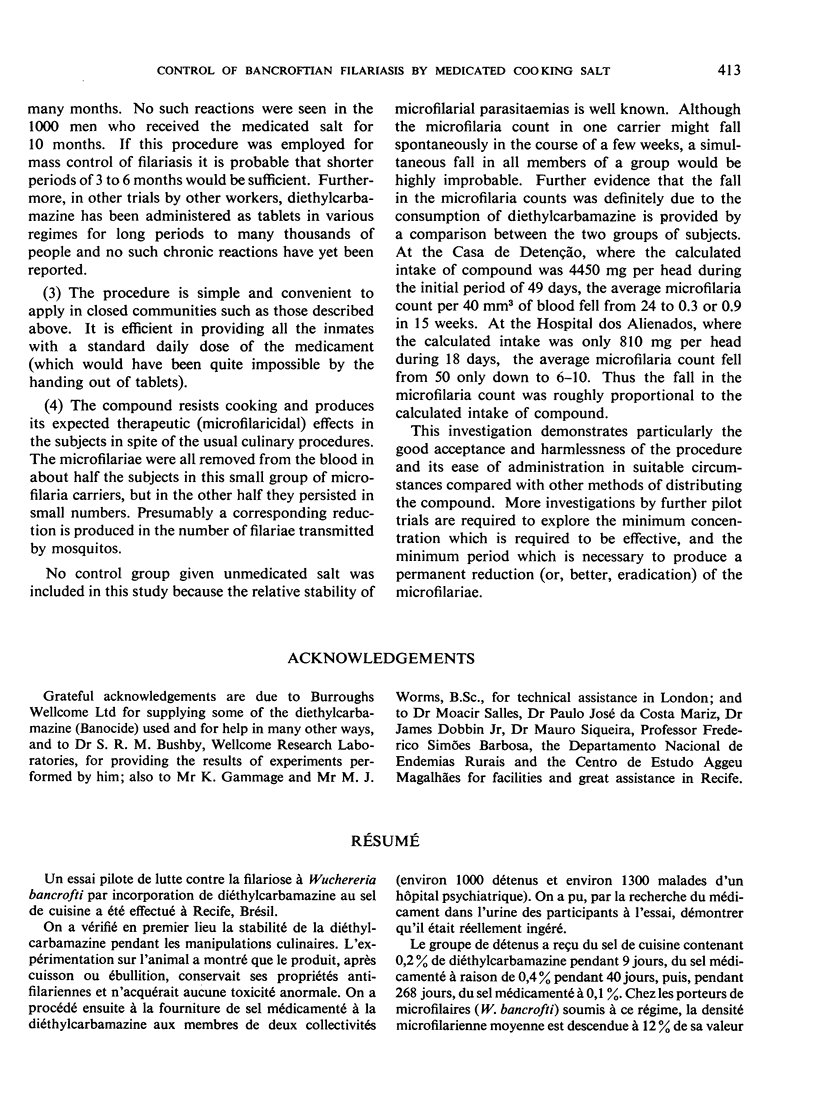
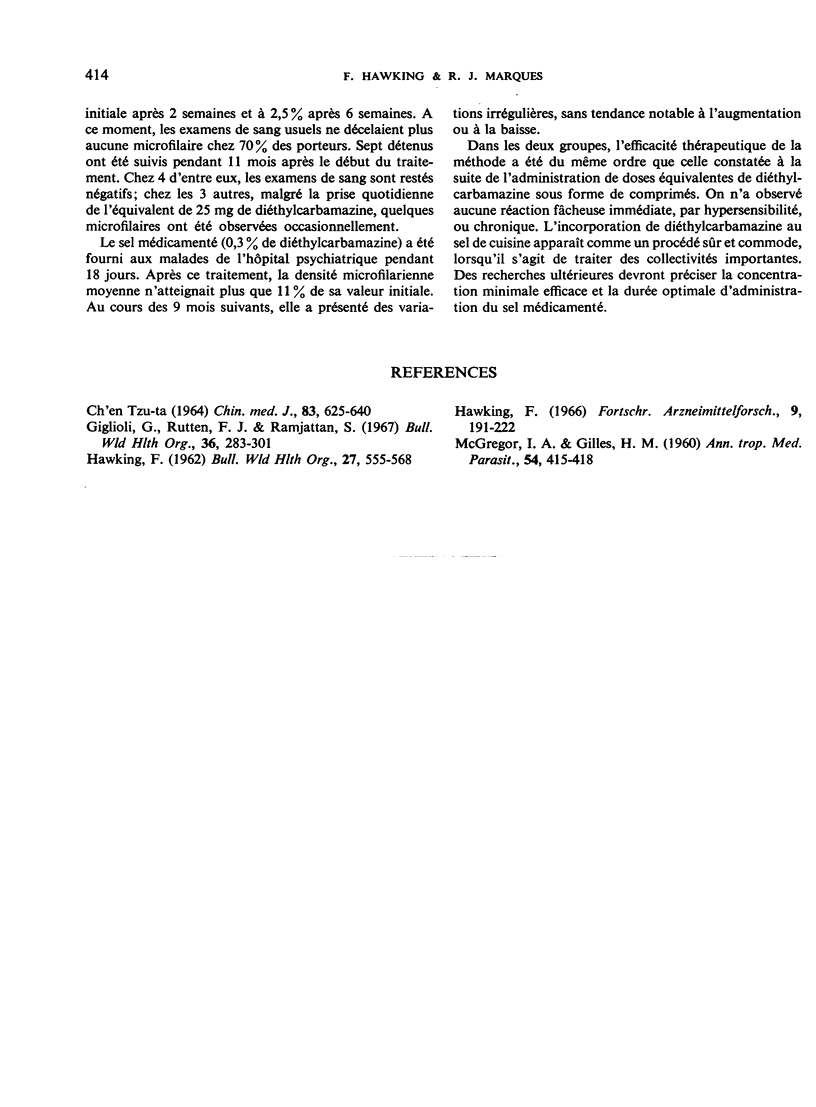
Selected References
These references are in PubMed. This may not be the complete list of references from this article.
- Giglioli G., Rutten F. J., Ramjattan S. Interruption of malaria transmission by chloroquinized salt in Guyana, with observations on a chloroquine-resistant strain of Plasmodium falciparum. Bull World Health Organ. 1967;36(2):283–301. [PMC free article] [PubMed] [Google Scholar]
- HAWKING F. A review of progress in the chemotherapy and control of filariasis since 1955. Bull World Health Organ. 1962;27:555–568. [PMC free article] [PubMed] [Google Scholar]
- Hawking F. Chemotherapy of filariasis. Fortschr Arzneimittelforsch. 1966;9:191–222. doi: 10.1007/978-3-0348-4021-7_3. [DOI] [PubMed] [Google Scholar]


